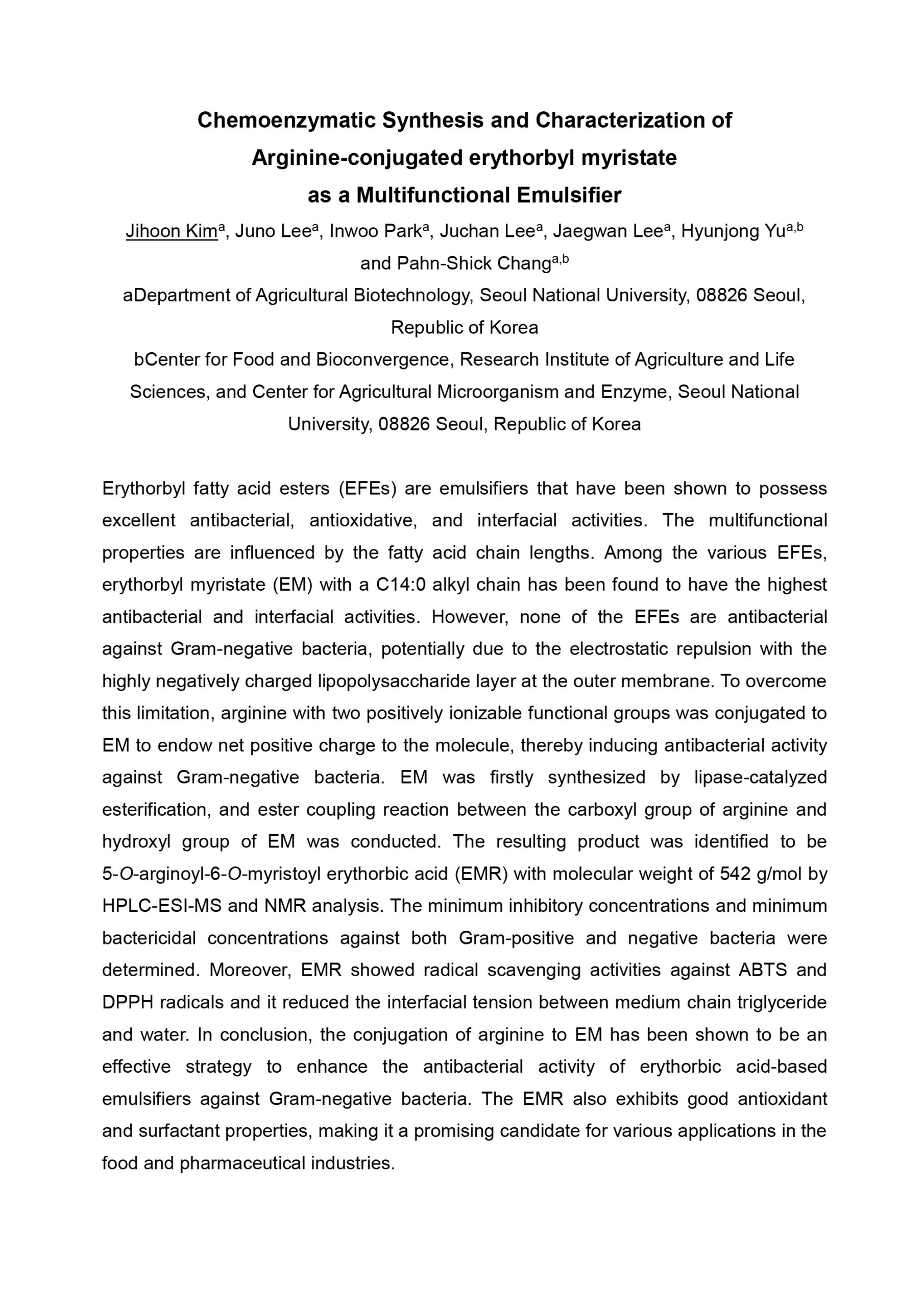Erythorbyl fatty acid esters (EFEs) are emulsifiers that have been shown to possess excellent antibacterial, antioxidative, and interfacial activities. The multifunctional properties are influenced by the fatty acid chain lengths. Among the various EFEs, erythorbyl myristate (EM) with a C14:0 alkyl chain has been found to have the highest antibacterial and interfacial activities.
However, none of the EFEs are antibacterial against Gram-negative bacteria, potentially due to the electrostatic repulsion with the highly negatively charged lipopolysaccharide layer at the outer membrane. To overcome this limitation, arginine with two positively ionizable functional groups was conjugated to EM to endow net positive charge to the molecule, thereby inducing antibacterial activity against Gram-negative bacteria. EM was firstly synthesized by lipase-catalyzed esterification, and ester coupling reaction between the carboxyl group of arginine and hydroxyl group of EM was conducted.
The resulting product was identified to be 5-O-arginoyl-6-O-myristoyl erythorbic acid (EMR) with molecular weight of 542 g/mol by HPLC-ESI-MS and NMR analysis. The minimum inhibitory concentrations and minimum bactericidal concentrations against both Gram-positive and negative bacteria were determined. Moreover, EMR showed radical scavenging activities against ABTS and DPPH radicals and it reduced the interfacial tension between medium chain triglyceride and water. In conclusion, the conjugation of arginine to EM has been shown to be an effective strategy to enhance the antibacterial activity of erythorbic acid-based emulsifiers against Gram-negative bacteria. The EMR also exhibits good antioxidant and surfactant properties, making it a promising candidate for various applications in the food and pharmaceutical industries.
